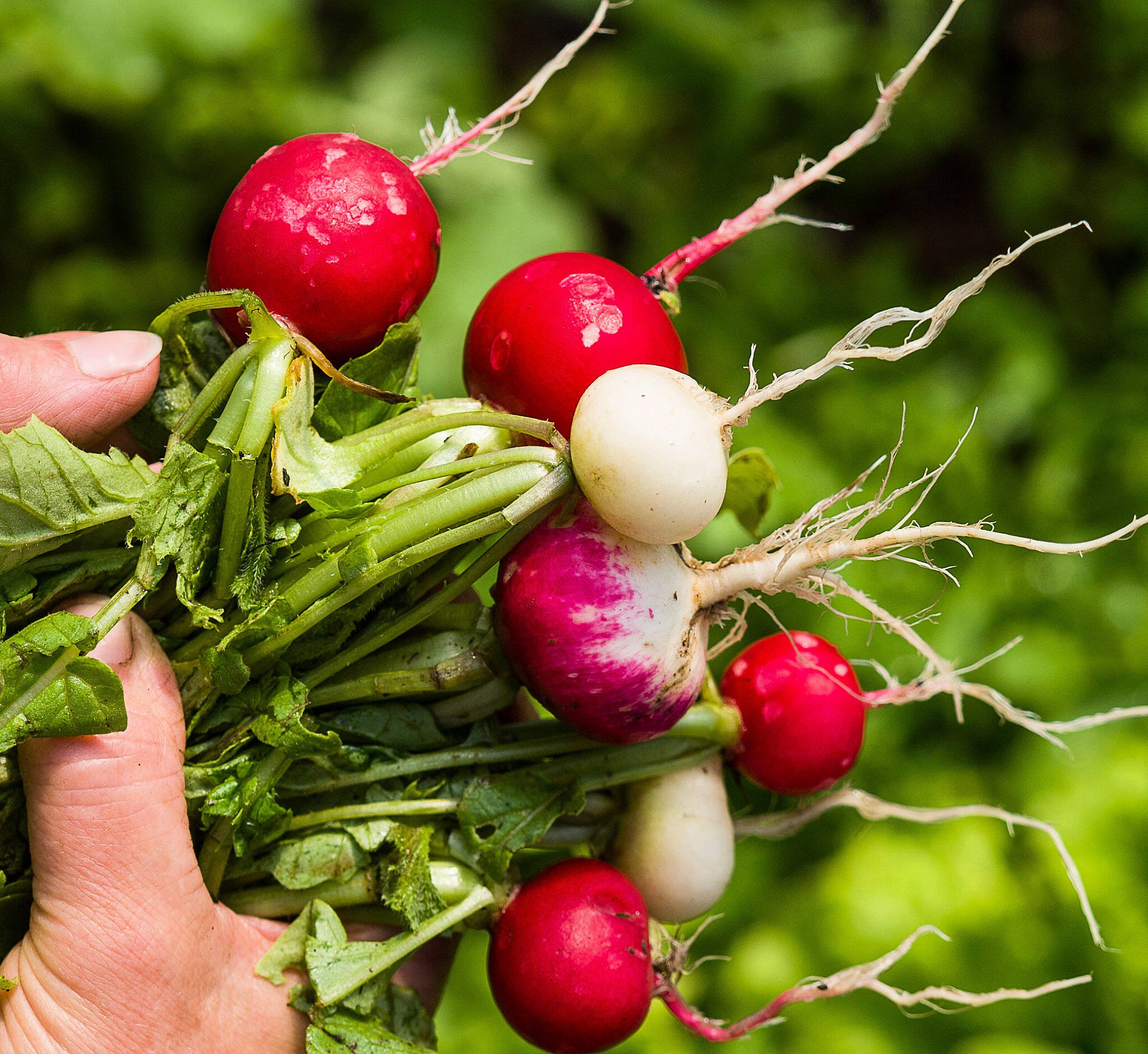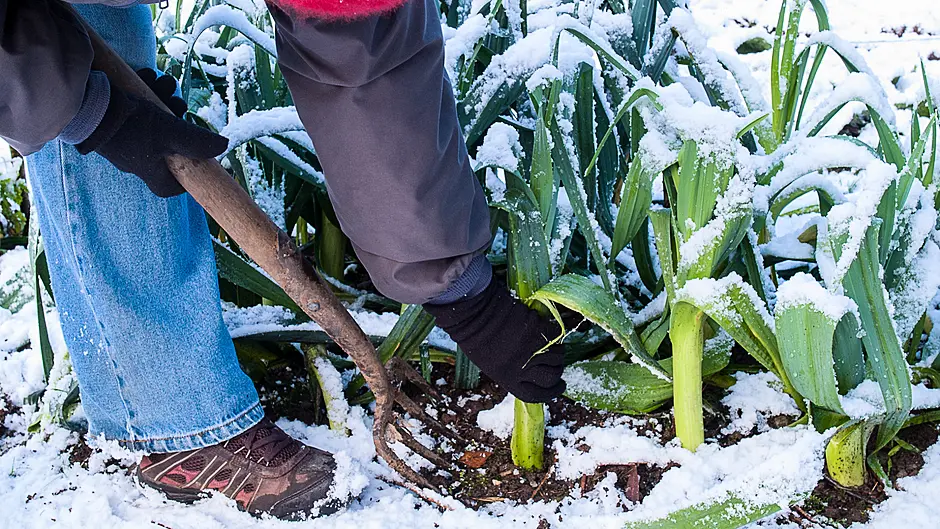WELL, we certainly got a hit of bad weather in January and it can be hard to assess what damage has been done.
Some plants perk up fairly quickly, some take a while longer to recover and can look very sorry for themselves until growth starts again as the weather warms up. You won’t know about others until buds start to burst. Low temperatures are always less damaging before bud break, although you may find there is die back on some trees and shrubs.
Check over-wintered crops
Repeated freezing and thawing isn’t great for any plant. Most of my leeks seem to have survived in an outdoor bed, although some outer layers are a bit mushy. Peel layers back until you have something clean sound and white – larger leeks can lose quite a lot of layers and still have plenty to eat at the heart. If you have a polytunnel or greenhouse, it might be worth growing some leeks in one of these structures next winter. They will survive with less damage if freezing temperatures hit again.
Brussels sprouts in the polytunnel are doing better than outdoor ones. Both have a bit of discolouration on outer layers – peel these off when preparing sprouts and the core should still be tasty to eat.
Sprouting broccoli plants dropped quite a few larger leaves and plants have less bulk now than usual. The tops still seem healthy though and April cropping varieties still have plenty of time to grow and crop well.
 Try sowing a short row of radishes in a greenhouse. (Photo: Ben Russell)
Try sowing a short row of radishes in a greenhouse. (Photo: Ben Russell)
Bulbs popping up
Most spring bulbs are hardy enough and there’s little that will stop early shoots from popping through the ground. First early daffodils are at the point of flowering now – a bright herald of all the colourful flowers to come.
Bulbs in pots benefit from being left in a sheltered place until they are fully grown and about to flower. You can move them to where you want to see them at that stage. Protect from winds and provide sticks for support if needed – try to reduce the risk of broken and flattened stems.
An early start
The seed packets are calling out to be noticed and the temptation to start sowing can be strong. Try to hold off on the major sowings for a few more weeks, but you can try a few things. A polytunnel or greenhouse makes early sowings more viable. Maybe sow a few more seeds than you usually would in one sowing, to cover any that might fail.
Radishes can be sown direct in a drill. They grow fast and are best picked while they are small and juicy.
Aubergines and peppers benefit from an early start. If you don’t have a propagator, try sowing in pots on a window ledge and cover each pot with a plastic bag. You will need to keep plants at around 20C while they grow. This early sowing should be flowering and setting fruits in July and August.
Perpetual spinach and chard can be sown now as can spring lettuce varieties. Start in pots with a small bit of heat (around 10C).
 Spring bulbs are popping up. (Photo: Ben Russell
Spring bulbs are popping up. (Photo: Ben Russell
A few jobs:
- Wash the greenhouse and polytunnel inside and out. This allows more light through to your plants. You only have to do this once a year so do as good a job as you can.
- Check supports on outdoor plants. This includes the stakes for tall brassicas and also the wires and canes that are used for wall trained fruit trees. Replace any that need attention before fruit trees open their leaves. The job is much easier when you can see the bare bones of the branches and frame.
- Wash any dirty pots. We may aim to clean them as soon as they are emptied, but most gardeners have a pile of the ones that escaped the perfect clean. Soak pots to loosen any dried compost and use a washing up brush if needed. A bit of soap helps, but always rinse well afterwards. You are aiming for a nice clean stack of pots all ready for the sowings to come.
- Check cloches and sheet coverings that are stored in a shed. Woven fabrics can be stitched if there are holes; plastic cloche covers can be taped if there are small rips. Aim to get everything in as good condition as possible and be prepared to accept that some things may need to be replaced. Clean polythene can be recycled so make sure to wash and dry it on a fine day.
Is it time to prune?
If you didn’t prune currants and raspberries last autumn, then do so now. The buds swell and burst early on these fruits and you want to get pruning finished before the process moves too far. Read what you need to do before you make any cuts and be sure that tools are sharp.








